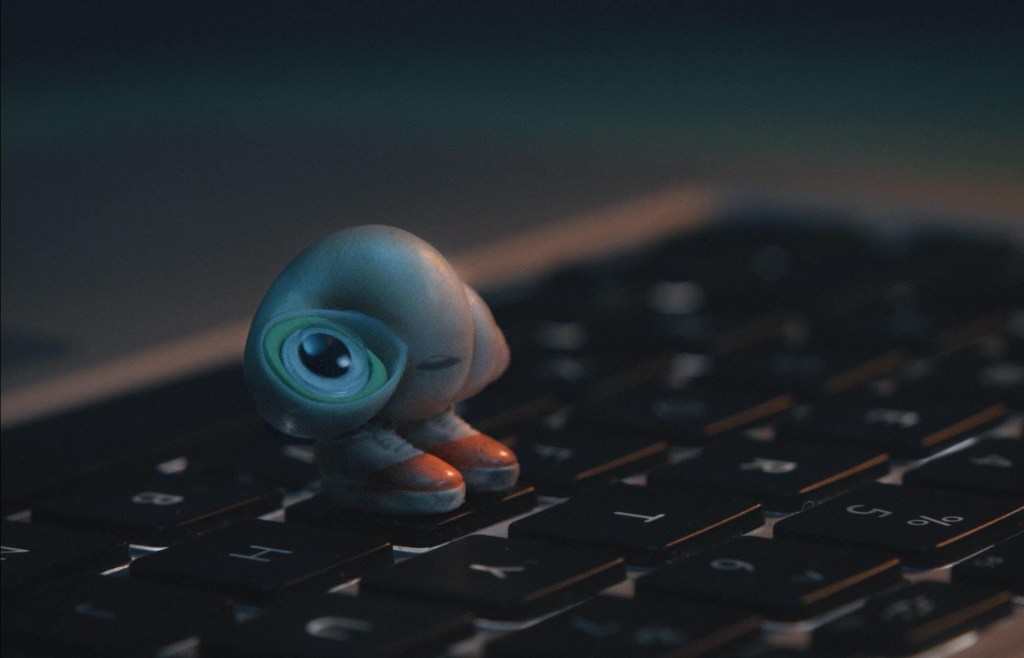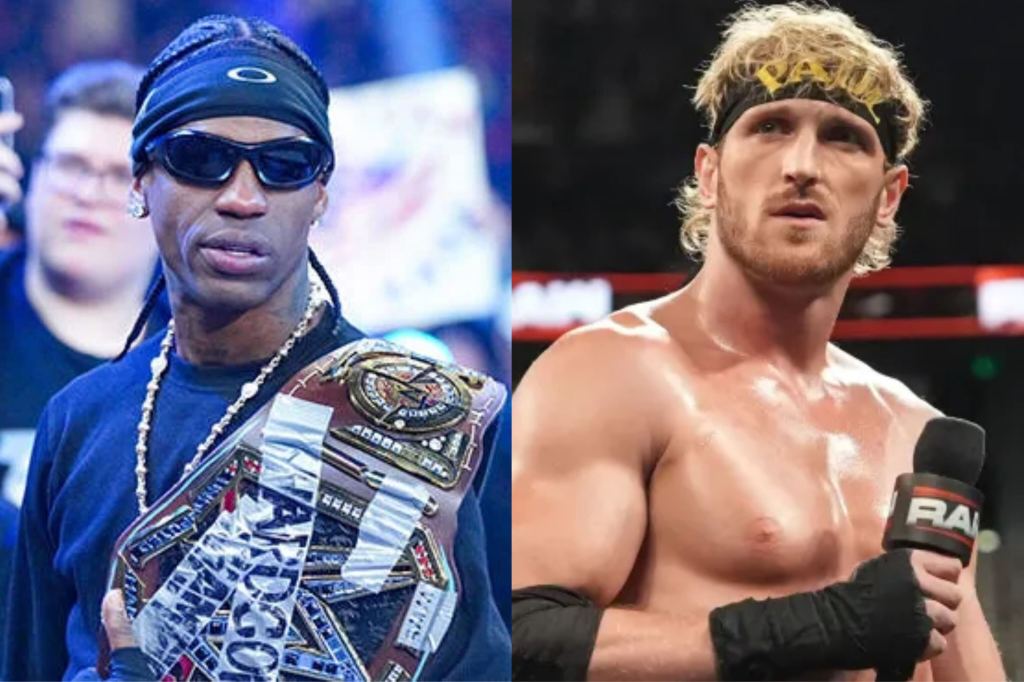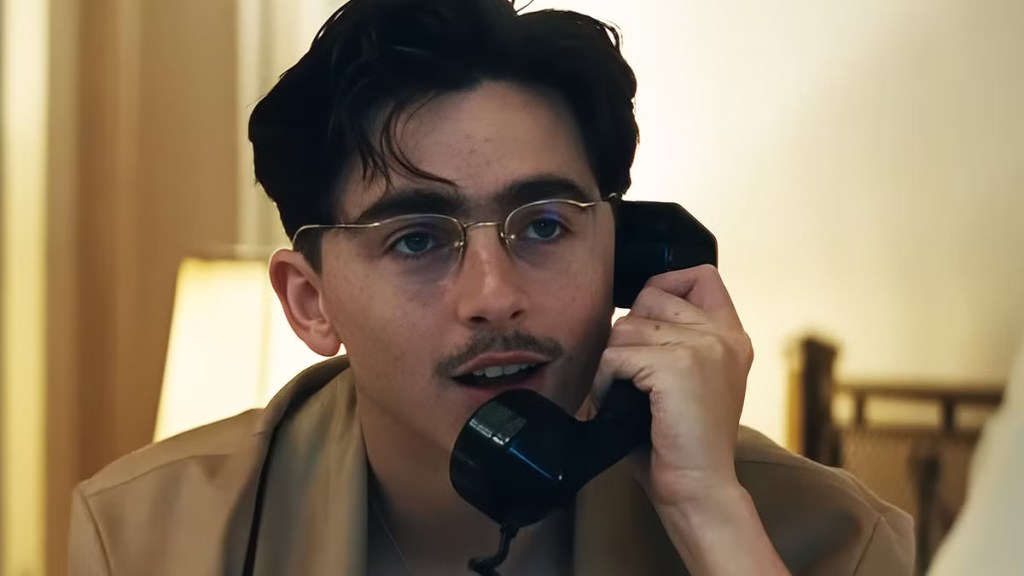The new A24-produced film Marcel the Shell With Shoes On is based on Dean Fleischer Camp and Jenny Slate’s beloved stop-motion animated shorts of the same name, which have garnered over 50 million views on YouTube since their 2010 debut, and spawned two New York Times best-selling children’s books. Slate voices Marcel, an adorable one-inch-tall seashell who lives a colourful existence with his grandmother Connie (Isabella Rossellini) and their pet lint, Alan, while Dean plays himself.
Here, Fleischer Camp takes us through his inspirations.
Videos by VICE
Ten years ago, I posted the first Marcel the Shell video on YouTube and watched with kinda-weirded-out amazement as its popularity grew and grew and Marcel became an internet sensation. I hadn’t planned on making something so broadly appealing, mostly because I didn’t have a plan. Marcel was born (by myself and co-creator Jenny Slate) in a spirit of fun and pure self-expression, which is the natural urge to take inner beauty or pain, and make it exist outside of ourselves so that those around us can experience it too. It’s an attempt to be seen when you feel invisible, to connect when you are alone. This was at the heart of that initial creative impulse, and I am proud to say that – although it took seven years of blood, sweat, and indie film hustle – it remains at the heart of my new film, the feature-length adaptation of Marcel the Shell with Shoes On.
I once saw the Czech New Wave filmmaker Ivan Passer do a Q&A after a screening of his wonderful film Intimate Lighting. A student raised her hand: “What’s your advice for somebody just starting out?” He looked her dead in the eyes and with knowing intensity said, “Be careful what you make movies about – they have a funny way of predicting the future.”
He’s not wrong: I pitched this film – a film about divorce, about loss, and about death as an imperative for all new life – about two years before I myself got divorced and lost both of my grandparents.
But it’s this connection to my (and Jenny’s) real personal life that has always made the character special, and it’s the reason I felt committed to achieving a level of “documentary” texture and authenticity that I’d never seen in an animated narrative film before. Doing so wasn’t easy – nobody had ever approached a film in quite this way before – and presented huge creative and technical challenges.
The films on this list helped us find our way, and the movie wouldn’t be the movie without them! Some served as formal or narrative inspirations. Others awakened in me the compassion and patience that is the hallmark of all great storytelling, and especially documentaries.
P.S. We have a lot of choices at the box office this summer, but I feel confident saying you’ll find no other movie as uplifting, honest, and genuinely-funny-in-the-real-actual-way-that-life-can-be-funny as ours. It will rejuvenate you. It will reconnect you to the source. It will move you to tears and beyond them, beyond anything else in theatres this summer. Come at me, Minions dipshits, I fucking dare you.
‘Creature Comforts’ by Nick Park
The only animated film to even come close to our tonal aspirations in terms of mixing documentary material with a more structured narrative is this early, Oscar-winning short from Aardman Studios principal and Wallace and Gromit creator Nick Park. In the film, stop-motion wildlife creatures are animated to real-life audio from man-on-the-street style interviews. The resulting dynamic is groundbreaking and hilarious, but why it appealed to me is because it somehow allows the film to function simultaneously as both a farce and a work of earnest slice-of-life non-fiction.
What would otherwise come off as pretty cartoonish (like a caged lion complaining about the square footage of his apartment) is instead grounded by the dry observational aesthetic of a low-budget documentary and shot through with impossible realism. My goal on Marcel was to tell his story with all the dignity and rough-hewn gravitas of a real documentary portrait like Grey Gardens or the Seven Up series, so this was an invaluable tuning fork for us.
‘Billy the Kid’ by Jennifer Venditti
Jennifer Venditti is a well-known casting director behind a whole slew of great “street casting” ensembles, like those featured in Uncut Gems and Euphoria, but she has made exactly one film ever: Billy the Kid. It’s a funny and deeply compassionate portrait of a teenager with some behavioural issues who she met and befriended while casting a totally different project. I can only assume that she stopped making films after this one because it turned out 1,000 percent perfect and she had nothing left to prove. A true reminder that a documentary portrait is only as powerful as its compassion.
‘The Company’ of Strangers by Cynthia Scott
An undersung masterpiece of 90s hybrid-doc filmmaking courtesy of the Canadian Film Board. The comedian John Early introduced me to this film, and it has made all the difference. No lie, probably the closest thing I’ve had to a spiritual experience watching a film.
‘David Holzman’s Diary’ by Jim McBride
I think hybrid-documentary filmmaking is only now beginning to mature as an art form, but this is an early example of the kind of hybrid-doc stuff I’m always drawn to. Despite the shabby 16mm look, it’s an incredibly sophisticated film. I think of myself as somebody who knows all the tricks, and I still don’t totally understand how they made parts of this film. Faux-docs, even those made decades later, don’t hold a candle in terms of texture and doc authenticity. Apparently when it first premiered, people had no idea it wasn’t a “real” documentary until the credits rolled and they saw actors credited.
‘Home of the Brave’ (radio pieces by Scott Carrier)
This isn’t a movie but an influence nonetheless. Scott Carrier is a brilliant radio producer and author whose work you’ve probably heard on NPR. He has a podcast now called Home of the Brave, Marcel’s co-writer Nick Paley and I would listen to off and on while we were writing or editing the story.
What is unique about making an animated film like Marcel is that we locked most of the audio before we even began storyboarding. So, for the longest time, we were working with just audio, and therefore drew inspiration from radio programs like Scott’s. The style of the movie and maybe some of my character’s personality owe a lot to Scott and his work, especially his earlier radio pieces which were in a more free form roving documentary style. There’s actually a homage in the film to a moment from a piece of his, called The Neighborhood.
‘Peter and the Farm’ by Tony Stone and ‘Rich Hill’ by Tracy Droz Tragos & Andrew Droz Palermo
I am including these together because they feel a little like spiritual sisters to me, in a sense. They’re both beautifully shot portraits of characters we think might not make it, who are haunted by the past, but whose hope carries them through the day.
I was also gripped by the ethical questions inherent in these docs, which we explore a little bit in Marcel. As a documentarian, how obligated are you to help your subject? Does it compromise your goals as a filmmaker? Will it change the “performance” that your subject gives? A lot of ethical dilemmas like these informed the story and [my character’s] trajectory over the course of it.
‘Sherman’s March’ by Ross McElwee
Other than maybe Blair Witch Project, this was the first movie I saw where the act of making the film was part of the film’s plot. A masterclass in how to make the character behind the camera just as present and dimensional as those in front of it.
‘Taking Off’ by Milos Forman
Milos Forman has always been one of my favourite filmmakers, not because of the big Hollywood dramas that came to define his career, but for the quiet awkward satires he cut his teeth making (Black Peter, Loves of a Blond, Firemen’s Ball). They are earnest, naive and plainspoken in a way that I find instantly charming, and that good will allows them to oscillate effortlessly between pathos and comedy without one undercutting the other. They’re broadly comedic but never in a way that feels cynical or insincere. Funny in the way that real life is sometimes funny.
Many of the scenes in Taking Off feel to me like that one story about your parents that you know always kills at a party. I think this is because Forman is willing to extend sympathy where lesser artists might’ve peel off toward ridicule. Just watch this great opening sequence from Taking Off, which Forman captured by holding a fake open-call audition in the West Village. It is simultaneously moving and vulnerable. And the fact that it never feels mean-spirited or exploitive is a testament to his humanism and empathy.
‘Intimate Lighting’ by Ivan Passer
Possibly it’s just growing up with Hollywood movies as the dominant cultural force, but Intimate Lighting blew me away when I first saw it. It’s a masterpiece of naturalistic comedic storytelling. The relationship at the centre of the film is everything, and I hoped to create something of that dynamic between Marcel and me in our film.
‘Daguerréotypes’ by Agnes Varda
I’m a huge fan of Agnes Varda (we even considered her for the role of Nana Connie!) but her documentaries in particular hold a special place for me. They have a particular impishness or buoyancy, which I think is as central to being a good filmmaker as anything they teach you in film school. Your primary role as a director on set is to remain fun, which isn’t always easy given the vicissitudes of film production. You must always be asking yourself: “What is fun or silly or meaningful, or what can I subvert about this scene/shot/sentence/whatever?”
“Fun” is too broad– maybe appealing or intriguing is the right word. But what I mean is that when you’re losing daylight and the crew is tired and lunch was cold and a battery just died in the middle of a take and your producers are getting nervous – your job is to see through this insane scrum of logistics and challenges and discomforts, and sustain contact with what the audience’s experience will be way, way, way, way down the line, in the theatre or wherever they watch this, sooo far away from this uncomfortable stressful set. What will they be experiencing in this moment in the story?
Marcel the Shell With Shoes On is out on June 24th.






